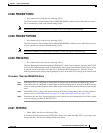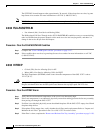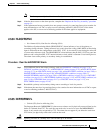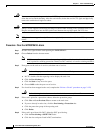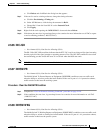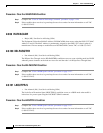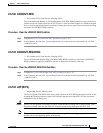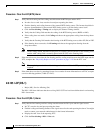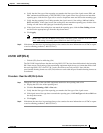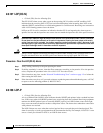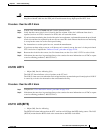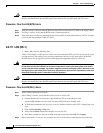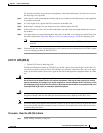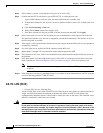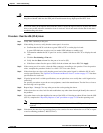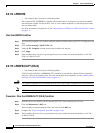
2-79
Cisco ONS 15327 Troubleshooting Guide, R3.4
March 2004
Chapter 2 Alarm Troubleshooting
Alarm Procedures
e. Verify that the line type of the reporting port matches the line type of the signal source (DS4 and
DS4, unframed and unframed, or ESF and ESF). If the signal source line type does not match the
reporting port, click the Line Type cell to reveal a drop-down menu and choose the matching type.
f. Verify that the reporting Line Coding matches the signal source’s line coding (AMI and AMI or
B8ZS and B8ZS). If the signal source line coding does not match the reporting port, click the Line
Coding cell and choose the right type from the drop-down menu.
g. If the signal source line coding does not match the reporting port, click the Line Coding column
and choose the appropriate type from the drop-down menu.
h. Click Apply.
Note On the DS-1 Line tab, the B8ZS coding field is normally paired with ESF in the Line Type
field. AMI coding is normally paired with D4 in the Line Type field.
Step 2 If the alarm does not clear, log onto http://www.cisco.com/tac for more information or call TAC to report
a service-affecting problem (1-800-553-2447).
2.6.106 LOF (DS-3)
• Critical (CR), Service Affecting (SA)
The DS-3 LOF alarm indicates that the receiving ONS 15327 has lost frame delineation in the incoming
DS-3 data stream. The framing of the transmitting equipment might be set to a format that differs from
the receiving ONS 15327. On XTC-28-3 cards, the alarm occurs only on DS-1 lines with the
provisionable framing format set to SF (D4) and not on cards with the provisionable framing format set
to unframed.
Procedure: Clear the LOF (DS-3) Alarm
Step 1 Change the line type of the non-ONS equipment attached to the reporting card to D4:
a. Display the card view of the reporting card.
b. Click the Provisioning > DS1 > Line tabs.
c. Verify that the line type of the reporting port matches the line type of the signal source.
d. If the signal source line type does not match the reporting port, click Line Type and choose D4 from
the drop-down menu.
e. Click Apply.
Step 2 If the alarm does not clear, log onto http://www.cisco.com/tac for more information or call TAC to report
a service-affecting problem (1-800-553-2447).



